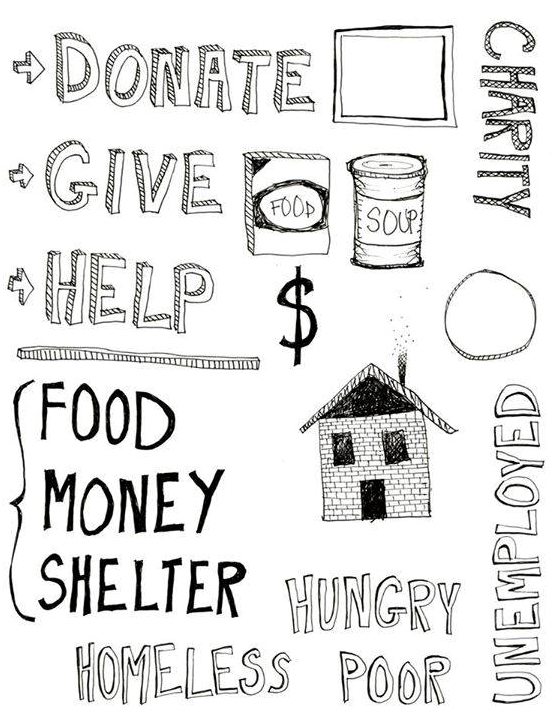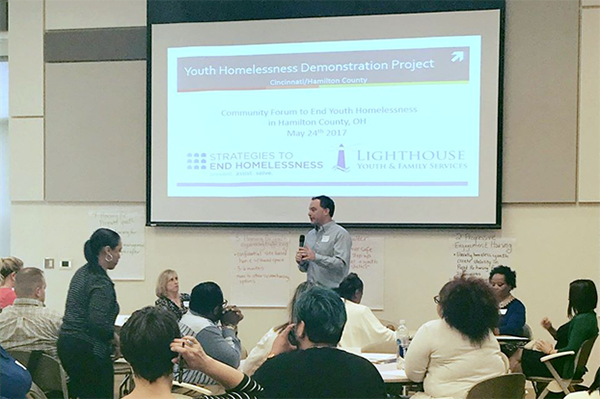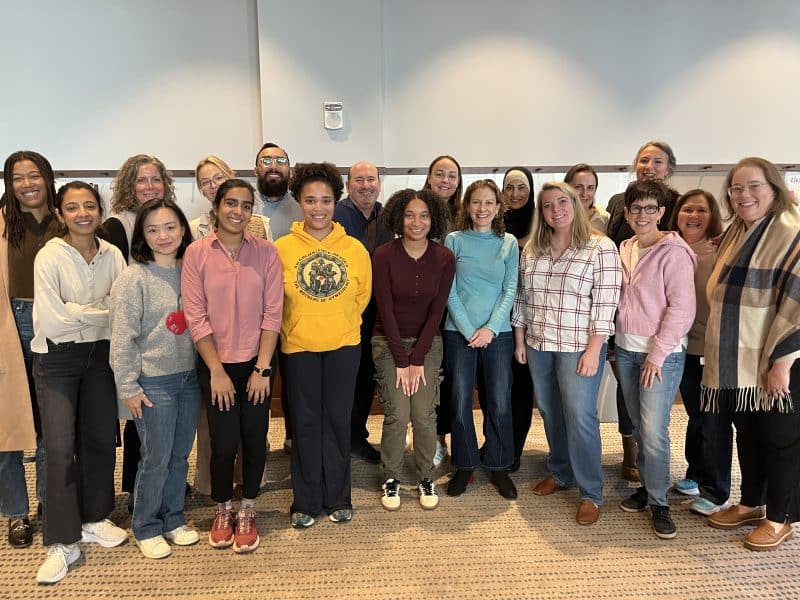Cincy organizations partner to help the homeless
Since 2007, Strategies to End Homelessness has led a coordinated community effort with the goal of ending homelessness in Greater Cincinnati, envisioning a community in which everyone has a stable home and the resources needed to maintain it.
Whether it is someone you can or can’t see as visibly homeless, the growing population of homeless individuals in the nation is increasing at a rapid rate.
3.5 million Americans experience homelessness every year, including over 1.35 million children. And this is just an estimate from counting people on the streets and in homeless shelters across the nation. This results in underestimates of homelessness.
Everywhere you look in Cincinnati, you see someone that calls the streets their home. In a 2016 demographic research survey on homelessness in the area, 7,168 individuals were homeless in Cincinnati. That number has since increased to more than 9,000 people.
Since 2007, Strategies to End Homelessness has led a coordinated community effort with the goal of ending homelessness in Greater Cincinnati, envisioning a community in which everyone has a stable home and the resources needed to maintain it.
Strategies to End Homelessness CEO Kevin Finn wanted to see a more coordinated effort to tackle the issue of homelessness in the Greater Cincinnati area and with the help of several other people started his agency.
“I used to be a street outreach worker working with homeless teenagers,” Finn says. “One of the things I noticed when doing street outreach was that services for the homeless were not yet very well organized, that the agencies working with the homeless didn’t really coordinate their efforts. I took a job with the for-profit consulting company that was at that time overseeing U.S. Department of Housing and Urban Development/Continuum of Care for the Homeless funds. Then in 2007, it became clear, based on legislation being considered by Congress, that such HUD funding was going to need to be administered by a non-profit organization in the future.”

Strategies to End Homelessness stands out from other local/state/national organizations combating homeless where they are on several levels. In 2015, the organization became one of only 7 homeless services systems in the country (out of 410+) to be designated by HUD as high performing. As a result, they were given a higher level of autonomy than the other 400+ communities to which HUD provides funding, which allows more flexibility and innovation in meetings the needs of homeless people. In 2017, they were one of only 10 communities to be chosen by HUD to be a part of a Youth Homelessness Demonstration Program, piloting innovative strategies for reducing youth homelessness.
“We are unique.” Says Finn. “Most communities do not have an organization dedicated to creating coordination and efficiency in the homeless services system.”
People tend to think of homelessness as an issue among adults, but Cincinnati’s homeless population is getting younger and younger. In Hamilton County, a quarter of homeless people are children under the age of 18, 37% are under the age of 25, and 55% are under the age of 35. Homelessness is definitely an issue that is disproportionately affecting young people, but that is not what most people believe to be the case.
Strategies to End Homelessness uses this data they have in every way possible to improve the homeless services system in Cincinnati by connecting with local companies and nonprofits.
“We are partnering with local data analytics firm “84.51” (formerly part of Dunn-Humby) to further analyze our data, identify trends, do predictive analysis of who might become homeless so that we can target prevention resources, etc.,” Finn says.
The organizations biggest partners are some that most locals have heard of, but the average Cincinnatian, according to Finn, may not realize that they are providing homeless services, and these partner organizations are staples of the fight to end homelessness in Cincinnati.
“People who have experienced homelessness as well as the staff of our partner organizations all have incredibly valuable first-hand experience & knowledge of homelessness, so they all need to have input on how funds are used.” Finn says.
YWCA of Cincinnati: runs a number of programs specifically for the homeless, from the Domestic Violence Shelter to transitional housing & Rapid Re-housing programs
Talbert House: operates hundreds of units of housing that is specifically for people who have experienced homelessness
Freestore Foodbank: largest homelessness prevention partner
Shelterhouse: aka the Drop Inn Center that operates two homeless shelters as well as hundreds of units of housing
Brighton Center: create opportunities for individuals and families to reach self-sufficiency through family support services, education, employment and leadership
Bethany House Services: empowers homeless and at-risk families with the solutions to achieve housing stability and long-term self-sufficiency
City Gospel Mission: programs and services are centered on caring, personal relationships focused in four key service areas: food and shelter, recovery, at-risk youth and job readiness and placement. City Gospel Mission works to engage, equip and empower those in need with the spiritual, emotional, mental and physical skills and resources to achieve long-term life transformation and self-sufficiency.
Jewish Family Services: strengthens lives and the community by providing professional social services to families and individuals in times of need
St. Francis / St. Joseph Catholic Worker House: homeless men can work on securing immediate needs of housing, employment, drug/alcohol rehabilitation and case management
While this only represents a portion of the 30 partner agencies/non-profits that Strategies to End Homelessness works with on a regular basis, it is a great example of the work that Cincinnati-based organizations are doing to help battle the homelessness crisis in the area.
Strategies to End Homelessness faces a bright horizon in 2018 as they continue to build into nearby communities.
“Homelessness is truly a regional issue, and it requires a regional response. About one out of every ten homeless people in Hamilton County came from a surrounding area in Ohio, KY, or Indiana because they could not access the help they needed at home, where there may not be an emergency shelter, etc.,” Finn says. “Therefore, a regional approach to the problem is needed, which is why we have expanded out footprint into NKY.”
“We are here, we are coordinating the work of 30 partner agencies who are on the front-lines of helping homeless people, and we are constantly looking for ways to make the system better for homeless people.”
Interested in volunteering or getting involved with the organization’s partner agencies?
“I always encourage people to volunteer, but since we are an administrative organization, we don’t really have may opportunities for volunteerism internally,” Finn says. “We do pair people who want to volunteer with our partner agencies, based on their specific interests such as working with adults or kids.”
If you find yourself in a situation where you need help making ends meet, reaching self-sufficiency, or just finding a place to stay, the organization says that the easiest way for a person who is homeless or at risk to access resources is to contact the Central Access Point hotline at (513) 381-SAFE (7233).
For more information about the organization, its partner agencies, and information on how to help, please visit https://www.strategiestoendhomelessness.org.

















